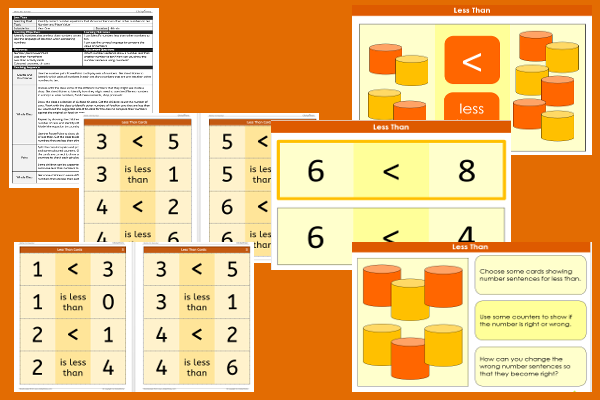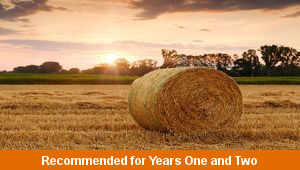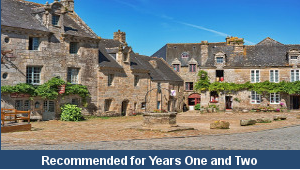Lesson Three – Less Than

This maths teaching pack for Key Stage One gets the children to identify and record the correct number equations that can show matching sets of numbers that are less than some other numbers to ten.
The class can practise using concrete equipment to model how to compare pairs of numbers to ten using the correct symbol for less than to illustrate their matching values.
Download this teaching pack including a lesson plan, classroom activities and an interactive presentation to identify and record the correct number equations that can show matching sets of numbers that are less than some other numbers to ten
Activities in this teaching pack include differentiated sets of cards to practise using concrete equipment and pictorial symbols to record the matching sets of numbers that are less than other numbers to ten for core and extension ability levels and to five for support ability levels.
The interactive presentation gets the children to explore the correct number equations that can show matching sets of numbers that are less than other numbers to ten.
This lesson is part of a maths scheme of work to get the children to use concrete equipment and diagrams to model how to compare numbers within twenty by the value of their digits when recording equations using numbers and symbols. There are teaching activities for shared learning, differentiated worksheets to support independent learning and interactive presentations to introduce concepts and key skills.
-

Harbour Labels
Practise structuring and formatting different word processed documents to describe a range of ships and boats seen in a harbour
-

Islam
Explore and illustrate some of the different stories, beliefs and practices of the Islamic religion including special festivals and sacred texts
-

Farm Prints
Practise and demonstrate different techniques when printing a range of shapes and patterns that can reflect themes and ideas related to farming
-

Towns and Villages
Identify, describe and compare some of the changes to different buildings that have occurred in the school neighbourhood over time
